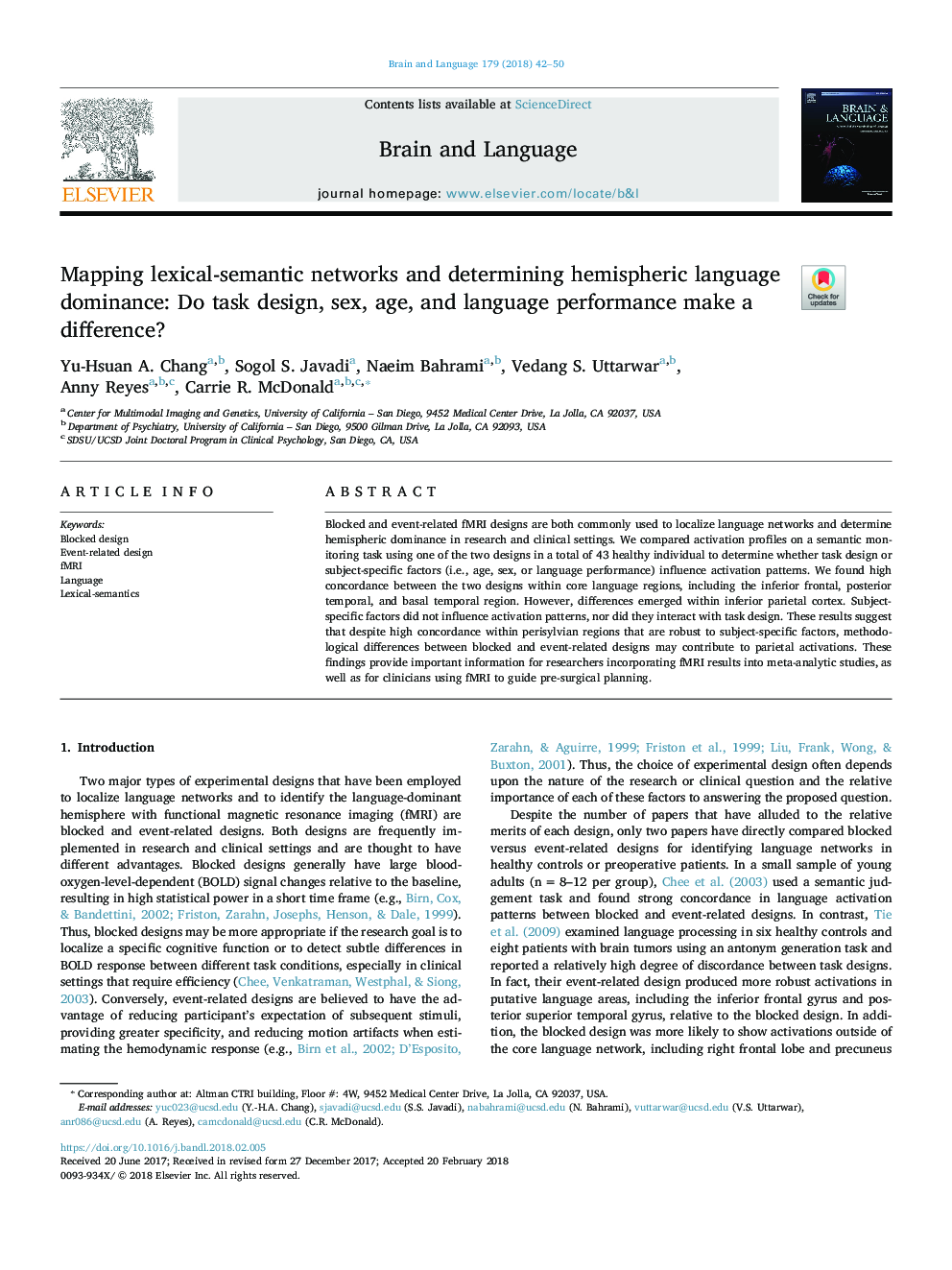| کد مقاله | کد نشریه | سال انتشار | مقاله انگلیسی | نسخه تمام متن |
|---|---|---|---|---|
| 7283575 | 1474006 | 2018 | 9 صفحه PDF | دانلود رایگان |
عنوان انگلیسی مقاله ISI
Mapping lexical-semantic networks and determining hemispheric language dominance: Do task design, sex, age, and language performance make a difference?
ترجمه فارسی عنوان
تطبیق شبکه های واژگانی-معنایی و تعیین سلطه نیمکره ای زبان: آیا طراحی وظیفه، جنس، سن و عملکرد زبان متفاوت است؟
دانلود مقاله + سفارش ترجمه
دانلود مقاله ISI انگلیسی
رایگان برای ایرانیان
کلمات کلیدی
موضوعات مرتبط
علوم زیستی و بیوفناوری
علم عصب شناسی
روانپزشکی بیولوژیکی
چکیده انگلیسی
Blocked and event-related fMRI designs are both commonly used to localize language networks and determine hemispheric dominance in research and clinical settings. We compared activation profiles on a semantic monitoring task using one of the two designs in a total of 43 healthy individual to determine whether task design or subject-specific factors (i.e., age, sex, or language performance) influence activation patterns. We found high concordance between the two designs within core language regions, including the inferior frontal, posterior temporal, and basal temporal region. However, differences emerged within inferior parietal cortex. Subject-specific factors did not influence activation patterns, nor did they interact with task design. These results suggest that despite high concordance within perisylvian regions that are robust to subject-specific factors, methodological differences between blocked and event-related designs may contribute to parietal activations. These findings provide important information for researchers incorporating fMRI results into meta-analytic studies, as well as for clinicians using fMRI to guide pre-surgical planning.
ناشر
Database: Elsevier - ScienceDirect (ساینس دایرکت)
Journal: Brain and Language - Volume 179, April 2018, Pages 42-50
Journal: Brain and Language - Volume 179, April 2018, Pages 42-50
نویسندگان
Yu-Hsuan A. Chang, Sogol S. Javadi, Naeim Bahrami, Vedang S. Uttarwar, Anny Reyes, Carrie R. McDonald,
